Portraits
| On this page, we would like to introduce a few selected family members in detail with reference to other websites for more information. |
|
HANS GEORG von ARNIM
(1583 – 1641) Military Commander, Statesman At the time of his life, reference to persons was not made in a standardized form. Thus Hans Georg is sometimes also called Johann Georg. Other variants of the family name can be found, e.g. “von Arnheim” as well as “von Arnhaimb” and “Ab Arnheymb”. The Italian version was also common: “Gio: Giorgio von Arnimb”. He himself signed the peace treaty of Schweidnitz in 1633 e.g. as “Hans Georg von Arnimb”.
He is a descendant from the Boitzenburg family branch that has become extinct in its male line and, in contrast to the Boitzenburg family still existing today, is called “Old Boitzenburg”. His ancestral estate Boitzenburg lies 20 km to the north of Templin in the Uckermark. In 1528 his grandfather Hans von Arnim had exchanged it for the extensive fief of Zehdenick and this remained in hereditery possession of the line Arnim-Boitzenburg until it was expropriated in 1945. His father was the “Landvogt” (governor of a royal province) of the Uckermark and margravial Lord Chamberlain (major domo) Bernd von Arnim (1542 – 1611). |
 |
||
|
His mother was the first spouse of Bernd von Arnim, born Sophia von der Schulenburg (1556 – 1605).
More detailed information about the biography of Hans Georg von Arnim can be found in the *pdf- file here. cf. Klaus Goebel, Schillers Arnheim in Wuppertal - Das Denkmal des Feldherrn Hans Georg von Arnim aus Liegnitz
|
|||
|
ACHIM von ARNIM
(1781 – 1831) Poet, Writer His complete Christian names are Carl Joachim Friedrich Ludwig Achim. He often referred to himself as Ludwig Achim. Today he is known throughout as “Achim von Arnim”.
Achim von Arnim is a descendant from the Uckermark family branch Blankensee. His father was the Prussian Royal Chamberlain Joachim Erdmann von Arnim (1741 – 1804), who possessed a number of estates in the Uckermark, serving the King of Prussia as ambassador (legate) at the court of Copenhagen, later in Dresden and was then commissioned as “Directeur des Spectacles”, managing the royal theatre in Berlin. With the funds of his mother-in-law, the banker’s daughter Caroline Marie Elisabeth Daum married to Hans Labes in her second marriage, Joachim Erdmann von Arnim bought the so-called “Ländchen Bärwalde”, which comprised the estates of Bärwalde, Wiepersdorf, Mainsdorf, Herbersdorf, Rinow, Weißen and Kossin. After his death in 1804 these estates remained at the right of disposal of his mother-in-law. |
.jpg ) |
||
| These she did not bequeath to her two grandchildren, Carl Otto Ludwig, called “Pit” (1779 – 1851) and Achim but to her eldest great-grandchildren to be born in future. Thus it came about that Achim spent a great part of his life in Wiepersdorf managing the estates but never being its owner. Achim’s mother was Amalia Caroline Labes (1761 – 1781), who died just after Achim was born. Together with his brother “Pit” he was brought up at his grandmother Labes’ house without ever having established any considerable connection to his father. More detailed information about the Achim von Arnim can be found in the *pdf-file here
Further information:
http://gutenberg.spiegel.de/archiv/autoren/namen/arnim.xml http://www.uni-koeln.de/phil-fak/idsl/arnim |
|||
|
BETTINA von ARNIM, born Brentano
(1785 – 1859) Writer Born, Elisabeth Catharina Ludowica Magdalena, she preferred to go by the name of Bettine and so she is frequently credited as such by the authors of modern literary research.
Bettina’s father was a merchant and the “kurtrierische Resident” in Frankfurt/Main, Peter Anton Brentano (1735 – 1797). Her mother was Peter Anton’s second wife, Maximiliane von La Roche (1756 – 1807). Bettina was the seventh child from this marriage. One of her elder brothers was the poet Clemens Brentano (1778 – 1842) to whom she felt a close bond in friendship and in spirit. He is said to have influenced her immensely in developing her particular sensitivity and outlook on life. Clemens became aquainted with a fellow student, the young Achim von Arnim, in 1801 and their close friendship stimulated each other’s writings and work. Both published and edited an acclaimed collection of folk songs (“Des Knaben Wunderhorn”) and became involved in various spiritual and literary circles. |
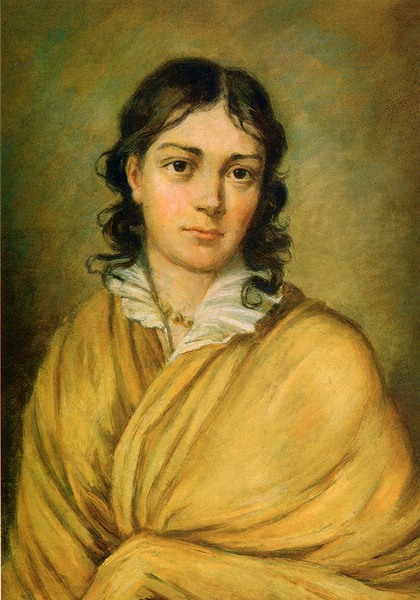 |
||
|
Bettina also became included in this circle of friends and was involved in the ideas of the Romantic period. This eventually led to her marriage to Achim von Arnim.
More detailed information about Bettina von Arnim can be found in the *pdf-file here
On the occasion of Bettina’s 150th anniversary of her death the Goethehaus in Frankfurt/Main arranged a special exhibition of her works and life from January 20th to April 5th 2009. A coloured and illustrated catalogue is available from there.
(Here you will find further detailed information).
Further information:
http://www.wortblume.de http://www.jiii.de/dichterinnen-2002/Arnim/ http://gutenberg.spiegel.de/archiv/autoren/namen/arnimb.xml http://www.uni-koeln.de/phil-fak/idsl/arnim |
|||
|
HEINRICH ALEXANDER Baron von ARNIM
(1798 – 1861) Prussian Diplomat, Statesman, Politician His first name was Heinrich but privately, in letters and poems and especially in his later marriage, he called himself Alexis, which was accepted by his intimate friends. Today the two forenames Heinrich Alexander are generally made use of.
His ancestral seat was Suckow in the Uckermark. He was born as the eleventh and youngest child of the second ”Fideikommißherr” of Suckow, Georg Leopold Vivigenz von Arnim (1747 – 1828) and his spouse Charlotte, born Countess zu Solms-Sonnenwalde (1759 – 1811). He received the essential basis of his education at the “Pädagogium” of the “Franckeschen Stiftungen” at Halle. There, his “turning to Christianity influenced by Pietism” (cf. Bussche, Albrecht von dem: Heinrich Alexander von Arnim, Biblio Publishing House Osnabrück 1986) was established. During the Wars of Liberation (1813 - 1815) he was wounded at the age of 17. Since then he has also been called the “lame Arnim”. |
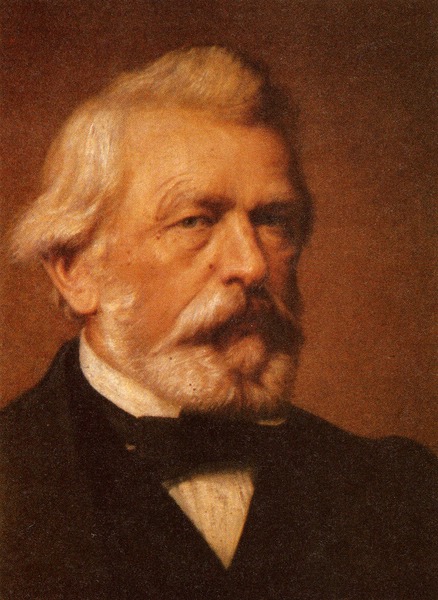 |
||
| Having finished his university courses in jurisprudence and political sciences (state politics) Heinrich Alexander von Arnim entered the Prussian diplomatic civil service.The most important appointments led him to Bern, Munich, Copenhagen, Naples and Darmstadt and to the post of Prussian Ambassador/legate in Bruxelles.At this time he was raised to a Prussian baron. He experienced the revolutionary year of 1848 at first as Prussian legate in Paris. Having returned to Berlin immediately he was appointed to the post of Foreign Secretary for a short time. At his own request he was called away from this post and resigned from the civil service.
More detailed information on Heinrich Alexander Baron von Arnim can be found in the *pdf-file here.
|
|||
|
Heinrich von Arnim
(1800 – 1855) Lord of mines and proprietor of iron and steel works Georg Heinrich Wolf was the eldest son of the Lord of the manors Planitz, Voigtsgrün, Irfersgrün, Crossen, and Groß Milkau (all in Saxony), Carl Christoph III von Arnim and his second wife Johanna née von Möllendorf. He lost his father when he was only 12 years old. At the age of 16 he was already a miner and thereafter worked in the silver mining industry at Freiberg (Saxony). At the age of 20 he went to university at the mining college in Freiberg.
When he was 30 years old he took over the management of the inherited hard coal mine business at Planitz to the south of Zwickau. In the following 25 years he proved to be a far-sighted, energetic entrepreneur, who modernized and extended the hard coal mining works. Together with the affiliate Königin-Marien iron and steel works in Cainsdorf he enabled the sale of his own coal for effective iron smelting and steel production. |
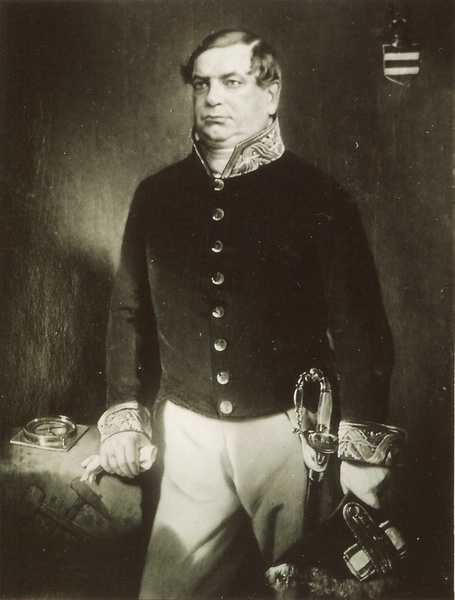 |
||
| He was successful in changing from an agricultural landowner to a prudent forward-looking and caring entrepreneur on the threshold of industrialization
More detailed information on Heinrich von Arnim can be found in the *pdf-file here.
|
|||
|
ADOLF-HEINRICH Count von ARNIM
(1803 – 1868) Prussian Governmental Administrator, Politician, Lord of the Earldom Boitzenburg Adolf Heinrich was born as the second son of Friedrich Abraham Wilhelm Count (Earl) von Arnim and Georgine, born Countess von Wallmoden-Gimborn on April 10th 1803 in Berlin. His parents were divorced in 1808 and his father already died in 1812 at the age of only 45 years. From then on the education of the son and the decision on his educational development lay in the hands of his grandmother, Freda Antoinette Countess von Arnim and Adolf Heinrich’s other guardian, Baron von Stein.
Adolf Heinrich attended the “Werder’sche Gymnasium” in Berlin and went on to study law in Göttingen and Berlin. At the age of 27 he became the head of administration (“Landrat”) of his home district Templin. |
 |
||
| Soon after he was commissioned as Vice-Chairman (“Regierungsvizepräsident”) of the regional council (board) of Stralsund as well as Chairman (“Regierungspräsident”) of the regional council of Merseburg and later Aachen. At the age of 37 he became “Oberpräsident” in the province of Posen until he got the vocation as Prussian (GB) Home Secretary / (USA) Secretary of the Interior. In March of the revolutionary year 1848 King Friedrich Wilhelm IV appointed him as Prime Minister. But the differences in conceptions between the King and his Prime Minister proved too great. Adolf-Heinrich resigned from his post only a few days after his assumption of office. After that he never assumed any public offices again. He dedicated himself to the administration of his possession of Boitzenburg, was a member of the National Assembly in Frankfurt for a short time and later a member of the Prussian state parliament. Finally he held a hereditary seat in the Prussian upper chamber (“Herrenhaus”). More detailed information about Adolf-Heinrich Count von Arnim can be found in the *pdf-file here. |
|||
|
HEINRICH LUDWIG FERDINAND von ARNIM
(1814 – 1866) Architect, Water Colourist, Prussian Head of the Planning Department and Building Control Office (Hofbaurat), Professor Born Ferdinand, his first name comes from the uckermärkische Arnim ancestral estate Kraatz. His great-grandfather and his great-great-grandfather had possessed this estate. Yet they sold it in 1774 in order to settle in the “Neumark”. The descendants from this family are still called “from the house of Kraatz” by the family today.
Ferdinand’s father, Friedrich Ludwig I (1783 – 1827), a godchild of the Prussian King Friedrich der Große, was a royal Prussian captain and then later “Hauptsteueramtsrendant” in Prenzlau. His mother was Henriette Wilhelmine Gadebusch (1778 – 1844). Ferdinand first completed his training (education) as an architect at the royal building school in Berlin and joined the Berlin architectural organization shortly after passing his exam. |
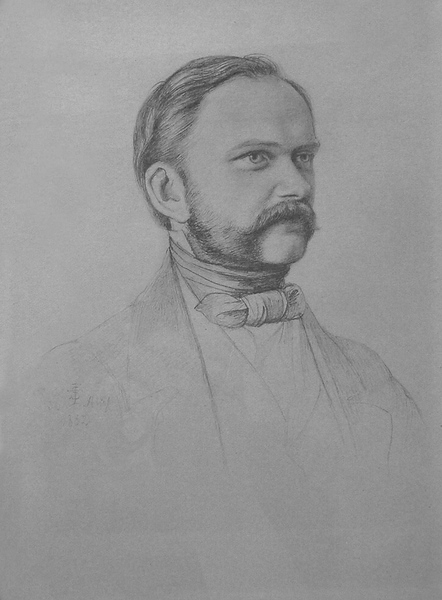 |
||
| He was a pupil of Karl Friedrich Schinkel and at the beginning of his career he often built and designed according to plans and sketches of Ludwig Persius, Ludwig Ferdinand Hesse and Friedrich August Stüler, e.g. the “Friedenskirche” in Potsdam. From 1846 onwards he was a teacher at the building academy and was appointed Royal Architect by Prince Carl of Prussia. Striking examples of his work are his own Villa Arnim next to park Sanssouci, the re-decoration of the hunting lodge at Glienecke and the building of the Swiss houses in Klein Glienecke. More detailed information about Ferdinand von Arnim can be found in the *pdf-file here. |
|||
|
HARRY COUNT von ARNIM
(1824 – 1881) Diplomat Harry von Arnim entered the Prussian diplomatic service and achieved a number of important and influential posts. He was a Prussian, later a northern German ambassador (legate) at the Holy See in Rome and during the time of the first Vatican Council (1869/70) made a name for himself with the issue of the papal infallibility. In 1871 he was appointed to lead negotiations for the French-German peace treaty. At the end of 1871 he was appointed to the important post of ambassador of the German Empire in Paris. He achieved the honour of
“Kammerherrenwürde”, was elevated to peerage (Count) and appointed as “Wirklicher Geheimer Rat”, called Excellency. He was a personal (intimate) confidant of Emperor William I and Empress Augusta. From today’s point of view his life’s achievements are not of any particular public interest. Instead his name stands out for the harsh political clashes between himself and the Imperial Chancellor, Fürst Bismarck. |
 |
||
| The conflict was publicly waged in a kind of press war and ended after many juridical criminal and disciplinary proceedings with a harsh sentence of imprisonment, which he evaded by fleeing to other European countries, and eventually ended in his early death. Soon it was suspected that the law courts had been abused in order to eliminate an irksome rival. The “Arnim-affair” and the “Arnim-trials” have not been forgotten since then and offer material for publication even nowadays. After all, his name is connected with the “Arnim-paragraphes”, as they are still called today. These were enclosed in the Criminal Code posthumously, in February 1876 as § 353a in order to apprehend the deeds Harry von Arnim was accused of in a better way and to be able to make the facts constituting the offences a criminal deed. More detailed information about Harry Count von Arnim can be found in the *pdf-file here.
Information on the headword “Arnim-paragraph” can be found in the *pdf-file here.
|
|||
|
GISELA von ARNIM
(1827 – 1889) Writer Born Gisela Ottilia Beata, she was the youngest of seven children of Achim and Bettina von Arnim. As she was only four years old when her father died, she had been living with her mother constantly, who spoilt her much as her favourite child so that Gisela developed spiritually far above her age. Even before she was six years old she took great delight in being read Shakespeare and only learned to read for herself very fast because she did not want to be dependant on others. “Gisela was highly talented, understood everything, knew a lot, but did not want to learn”, lamented Maxe (Maximiliane von Arnim) who taught her younger sister apart from spelling (…), also arithmetic, geography and French. Herman Grimm (later Professor for Art History and “Geheimer Regierungsrat”) was Gisela’s soulmate, a young boy of same age living in the house of the Arnims. Gisela and him soon developed a close bond and happy friendship.
|
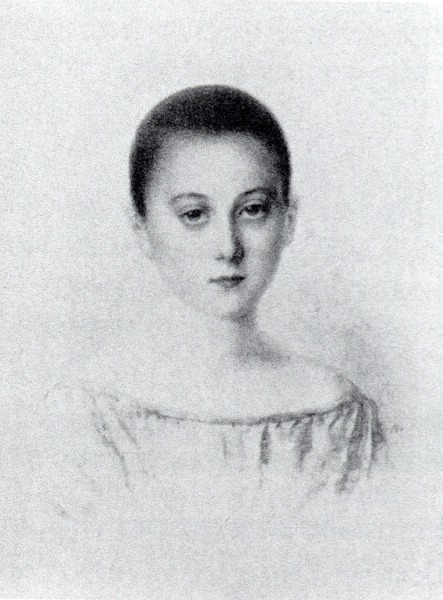 |
||
|
This friendship never swayed, became closer and closer and finally led to their marriage. (They did not have any children) (…)
Gisela died in 1889 on a journey to Florence. (cf. taken from “Das Geschlecht von Arnim, Geschichte der Familie, Der Hauptstamm Gerswalde, 3rd branch Blankensee” revised by Achim von Arnim Zernickow, Dietlof von Arnim Wiepersdorf and Christel von Arnim, Wiepersdorf 1993, published at the family’s own expense. Latest publications Bettina und Gisela von Arnim, „Das Leben der Hochgräfin Gritta von Rattenbeiunszuhaus”, a fairy novel, Manesse Verlag, Zürich 2008 Cf. „Hochgräfin Krimskrams“ by Hermann Kurzke in the Frankfurter Allgemeine Zeitung, 31st July 2008, No. 177, p. 32 Mey, Eva: „Ich gleich einem Sturm um Mitternacht. Die Schrifstellerin Gisela von Arnim, Tochter Bettinas und Gattin Herman Grimms“, Herzel Verlag, Stuttgart 2004 More detailed information about Gisela von Arnim can be found in the pdf-file here
|
|||
|
HANS von ARNIM
(1859 – 1931) Dr. phil., Dr. phil. h.c., Full Professor of Classic Philology His father was Friedrich von Arnim, Lord of the Estate Groß Fredenwalde and Albertinenhof in the Uckermark. His mother was Adelheid von Arnim, born von Arnim from the house Milmersdorf.
Hans went to the University of Greifswald to study Classical Philology and was a scholar of Professor Ulrich von Wilamowitz-Moellendorf. There he discovered his mission in life. After having written his doctorate thesis and having achieved postdoctoral teaching qualification he worked at the University of Halle and then Rostock, being appointed as full professor. In 1900 he followed a call to professorship at the University of Vienna. There he succeeded Theodor Gomperz as Professor for Greek Philology. During World War I he returned to Germany temporarily and went to the University of Frankfurt/Main. In 1916/17 he was appointed vice-chancellor of the University. In 1921 he returned to the University at Vienna. |
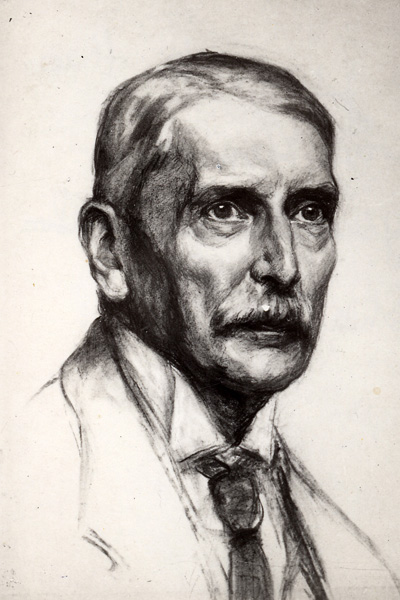 |
||
|
Hans von Arnim was the first member of the von Arnim family who did not follow the traditional profession like doing service in the administration, in the diplomatic service or in the army. But instead he gained a reputation as humanities scholar all of his own accord.
In 1884 he married Elisabeth Riese (1859 – 1945), daughter of the “Geheime Sanitätsrat” (medicine), Julius Riese, director of the Elisabeth Hospital in Berlin and his wife Elisabeth Riese, born Beck. The couple had two sons and two daughters. Links and other details about Hans von Arnim can be found in the *pdf-file here. Hans von Arnim in http//wikipedia.org Hans von Arnim, Referat von Christa Dempf-Dulckeit, born von Arnim, Berlin 1953, p. 372 Duncker & Humblot
Hans von Arnim in : Egermann, Franz: Neue Deutsche Biographie, Bd. 1 Directory of his works in: Katalog der Deutschen Nationalbibliothek, excerpt from his diary of 1875
|
|||
|
ELIZABETH von ARNIM
(1866 – 1941) Writer Mary Antoinette Countess von Arnim, born Beauchamp was called May by her family.
As an author she published her first novel “Elizabeth and Her German Garden” anonymously. When this book proved to be successful she signed her further works with the indication “by the author of Elizabeth and Her German Garden”, but did not disclose her name. From then on the autobiographical figure of Elizabeth was used as a synonym for her person. Only the novel published in 1917 “Christine” was written under the pseudonym Alice Chalmondeley. Just in recent years she has become known by the name of Elizabeth von Arnim in Germany as well, as those works published between 1898 and 1940 had been made available again under that name. This is also the case for the books she wrote from 1916 onwards after her second marriage to Francis Russell, Viscount of Amberley. |
 |
||
|
Her father was the merchant Henry Herron Beauchamp, who had emigrated from London to Australia and made a considerable fortune there. Her mother was Elizabeth (Louey) Beauchamp, born Weiss Lassetter. The British writer Katherine Mansfield (actually Kathleen Mansfield Beauchamp) (1888 – 1923) was her cousin.
More detailed information about Elizabeth von Arnim can be found in the *pdf-file here.
|
|||
|
Hans-Jürgen von Arnim
(1889 – 1961) Full General (Generaloberst) ret. Hans-Jürgen von Arnim stems from the Uckermark family branch of Suckow. His father was the Royal Prussian Major-General (retired) Hans von Arnim (1861 - 1931), his mother, Martha Honrichs (1865 - 1953), came from Reichenbach, Silesia. Already his grandfather, Theodor von Arnim, has also been a military officer and was retired as Royal Prussian Colonel.
Hans-Jürgen von Arnim entered the 4th Guards Regiment on foot after his “Abitur” and started his career like his ancestors as a regular / professional soldier. At the end of 1st World War he was captain and was taken over by the “Reichswehr”. Having served as a commander of a battalion and commander of a regiment he was promoted to become the commander of a division. After promotion to Full General (Generaloberst) he received the supreme command of the armed forces in Africa - Commander-in-Chief of the Army Group Africa (Heeresgruppe Afrika).
|
 |
||
| When the German army surrendered in May 1943 to the meanwhile superior British army he was taken prisoner by the British and was later held in captivity by the Americans.
More detailed information about Hans-Jürgen von Arnim can be found in the *pdf-file here. |
|||

